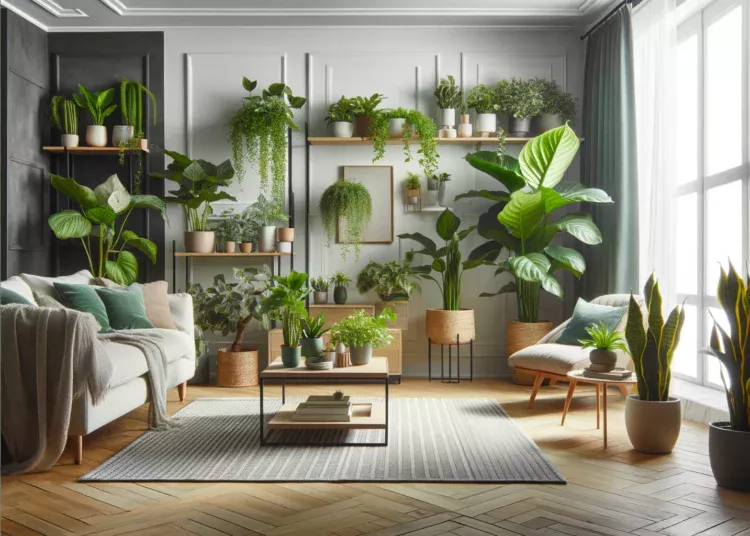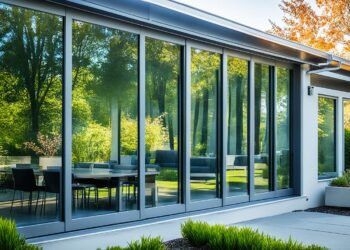Discover the best plant trends for home decor in 2024! Explore how to enhance your living space with the latest plant selections, from stylish indoor gardens to air-purifying plants. Learn about low-maintenance options, pet-friendly choices, and tips for incorporating greenery into any home style.
Why Houseplants Are Popular in 2024
The Benefits of Having Houseplants at Home
Houseplants have become increasingly popular, especially as more people spend time at home. The benefits of having houseplants go beyond mere decoration. Here are some key advantages:
- Improving Air Quality: Houseplants can significantly enhance indoor air quality. They absorb toxins, increase humidity, and produce oxygen. Plants like the Spider Plant, Peace Lily, and Boston Fern are known for their air-purifying properties.
- Enhancing Home Aesthetics: Plants add a touch of nature to home interiors, making spaces feel more inviting and vibrant. They come in various shapes, sizes, and colors, creating endless decorative possibilities.
- Boosting Mental Health: Studies have shown that being around plants can reduce stress and improve mood. Plants provide calm and tranquility, making them ideal for home environments.
Trends Driving the Popularity of Houseplants
Several trends are contributing to the surge in houseplant popularity in 2024:
- Sustainability and Eco-Friendly Living: As people become more environmentally conscious, they seek ways to incorporate sustainable practices into their daily lives. Houseplants naturally fit this trend, as they promote a greener lifestyle.
- Urban Gardening: With urbanization on the rise, many people live in smaller spaces without access to traditional gardens. Houseplants allow urban dwellers to enjoy the benefits of gardening indoors.
- Wellness and Self-Care: The wellness movement emphasizes the importance of mental and physical health. Houseplants are a popular self-care tool, offering therapeutic benefits and encouraging mindfulness.
Top Plant Trends for 2024
Low-Maintenance Plants
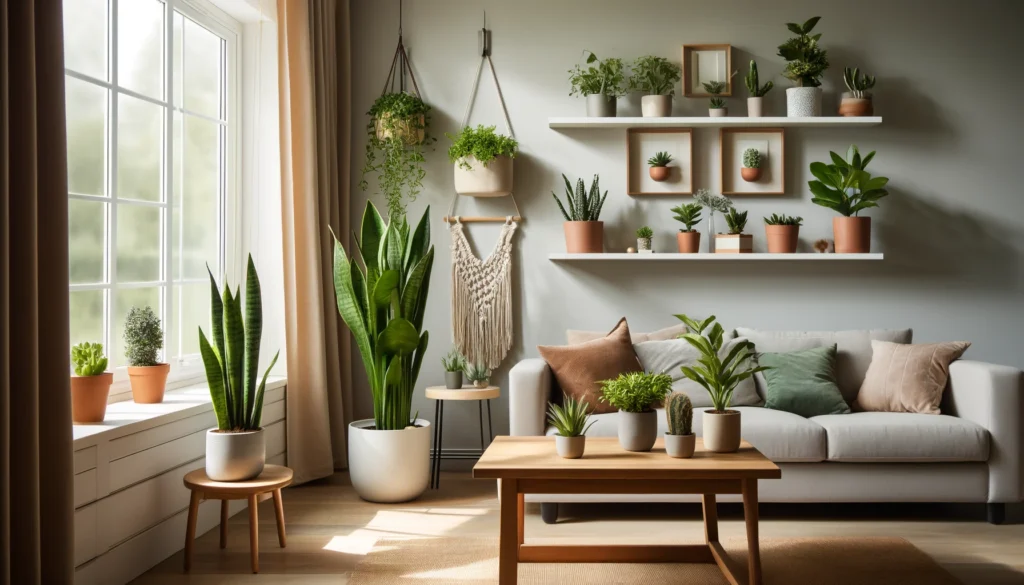
In 2024, low-maintenance plants are a top trend, catering to busy individuals who want the benefits of houseplants without the high upkeep. These plants are resilient and require minimal care:
- Snake Plant: Known for its hardiness, it thrives in low light and needs infrequent watering. It’s also an excellent air purifier.
- ZZ Plant: This plant is nearly indestructible and tolerates low light and drought conditions. Its waxy, smooth leaves add a touch of elegance to any room.
- Pothos: A versatile plant that can grow in water or soil, Pothos is easy to propagate and can survive in various light conditions.
Edible Houseplants

Growing edible plants indoors is a trend gaining traction in 2024. These plants provide both aesthetic and practical benefits:
- Herbs: Basil, mint, and parsley are popular choices for indoor herb gardens. They require little space and can be used fresh in cooking.
- Vegetables: Cherry tomatoes, lettuce, and peppers can be grown indoors with the right setup. These plants offer a continuous supply of fresh produce.
- Microgreens: Fast-growing and nutrient-dense microgreens like arugula and radish sprouts are perfect for indoor cultivation.
Air-Purifying Plants
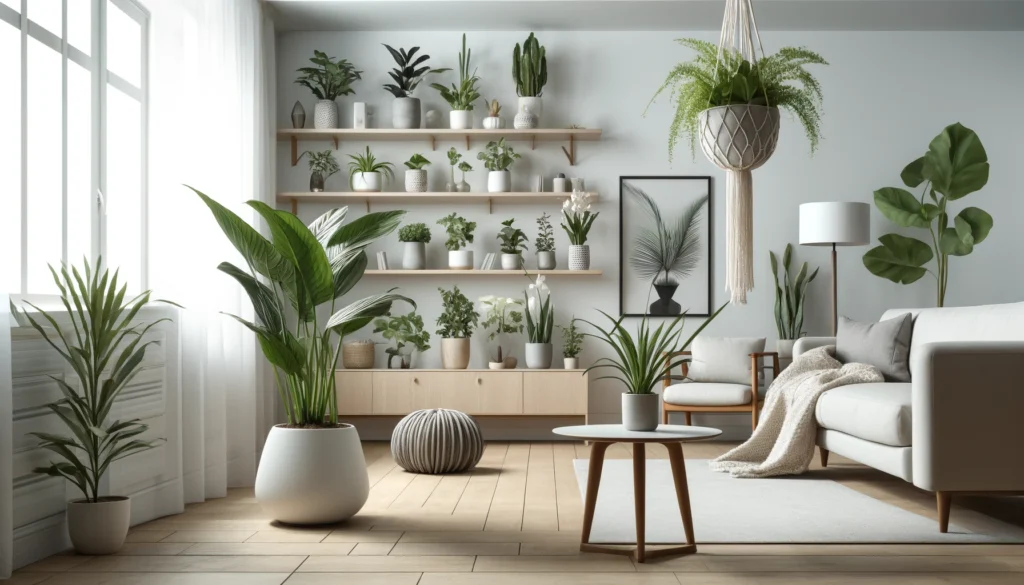
With increasing awareness of indoor air quality, air-purifying plants are a significant trend. These plants help remove toxins and improve overall air quality:
- Spider Plant: Effective at removing formaldehyde and xylene, the Spider Plant is easy to grow and propagate.
- Peace Lily: Known for filtering out benzene, formaldehyde, and trichloroethylene, the Peace Lily also produces beautiful white blooms.
- Boston Fern: This plant excels at removing pollutants like formaldehyde and adding humidity to the air, making it ideal for dry environments.
Rare and Exotic Plants
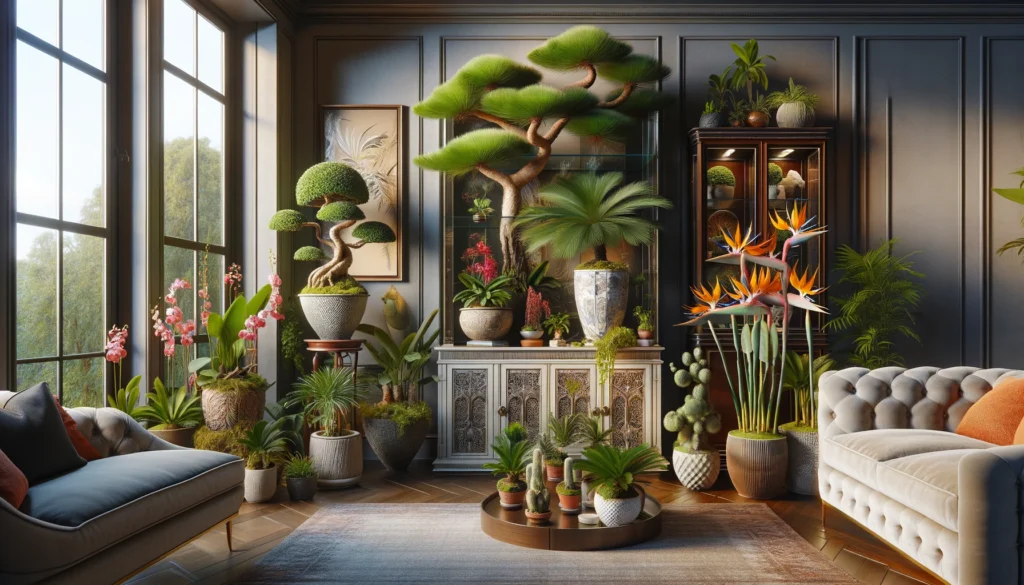
Collecting rare and exotic plants has become a hobby for many plant enthusiasts. These plants add a unique and striking element to home décor:
- Monstera Albo: This variegated Monstera is highly sought after for its stunning white and green leaves. It requires bright, indirect light and regular watering.
- Pink Princess Philodendron: This plant is a favorite among collectors with its distinctive pink and green foliage. It thrives in warm, humid conditions.
- Variegated String of Hearts: Known for its delicate, heart-shaped leaves, this plant adds a touch of elegance to any collection.
Pet-Friendly Plants
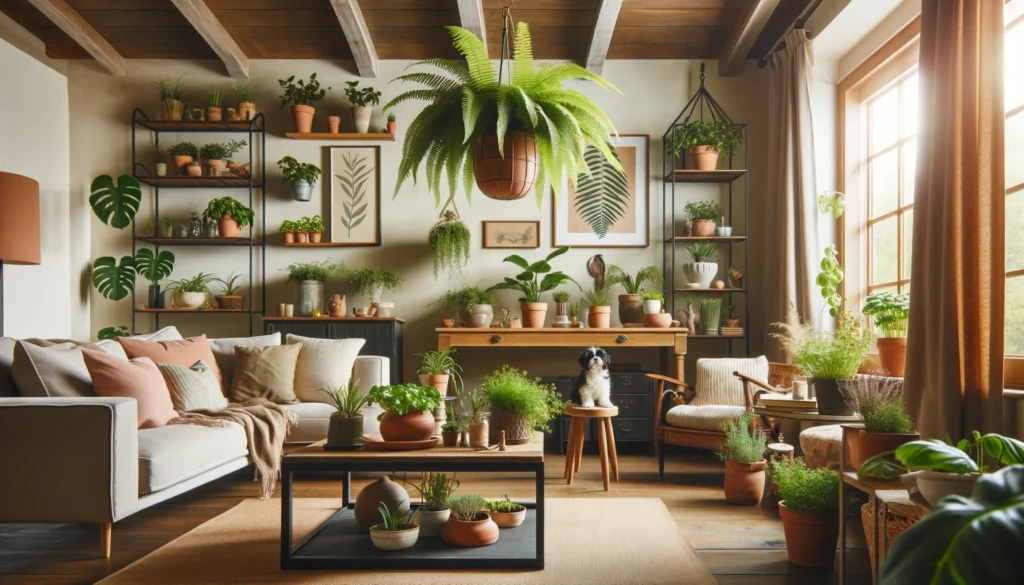
For households with pets, choosing pet-friendly plants is crucial. These plants are safe for animals and add beauty to the home:
- Areca Palm: This plant is non-toxic to pets and adds a tropical vibe to interiors. It prefers bright, indirect light and regular watering.
- Parlor Palm: Another pet-safe option, the Parlor Palm is low maintenance and thrives in low-light conditions.
- Calathea: Known for its stunning leaf patterns, Calathea is safe for pets and prefers high humidity and indirect light.
Home Plant Décor Trends
Vertical Gardens
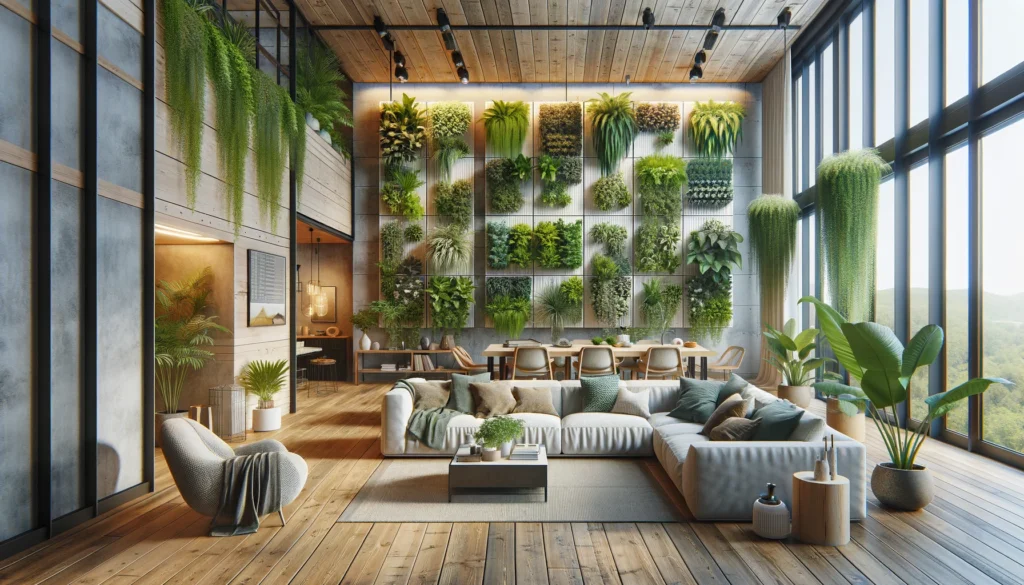
Vertical gardens have emerged as a popular trend in home décor, especially for those living in small spaces or urban environments. These gardens utilize vertical wall space to grow plants, offering both aesthetic appeal and practical benefits:
- Benefits of Vertical Gardens: Vertical gardens maximize space utilization, making them ideal for apartments, condos, or small homes. They also provide insulation, reducing energy costs, and can improve air quality by filtering pollutants.
- How to Create a Vertical Garden: There are various ways to create a vertical garden, including wall-mounted planters, hanging pots, or modular systems. Consider sunlight exposure, irrigation, and plant selection when designing your vertical garden.
- Popular Plants for Vertical Gardens: Succulents, herbs, and trailing vines are popular for vertical gardens due to their adaptability to vertical growth. Consider mixing different plant varieties to create visual interest and texture in your vertical garden.
Hanging Plants
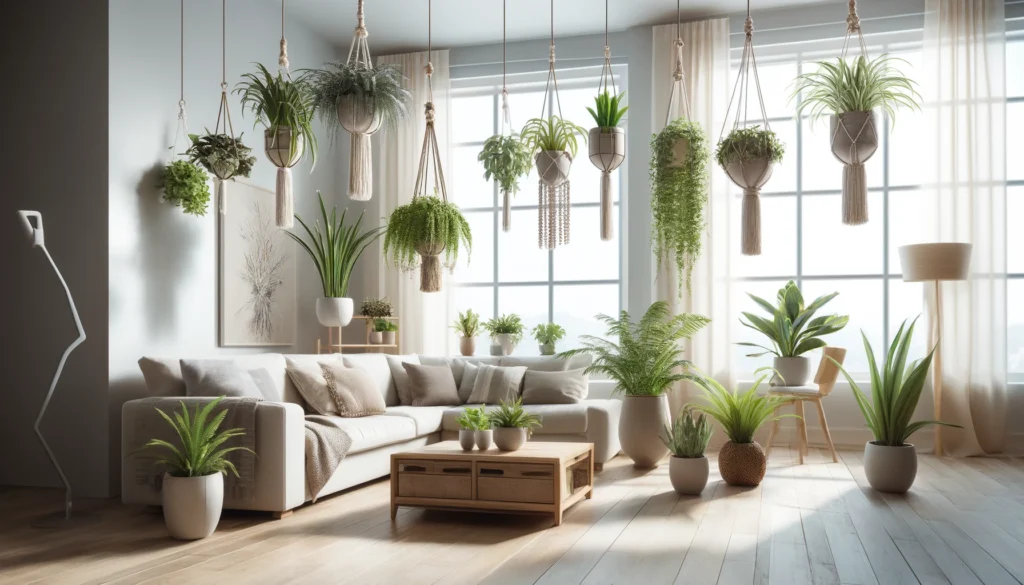
Hanging plants have become a trendy home décor option, adding a touch of whimsy and greenery to indoor spaces. Whether suspended from the ceiling or mounted on walls, hanging plants offer versatility and charm:
- The Trend of Hanging Plants: Hanging plants have gained popularity for adding visual interest to otherwise overlooked spaces, such as corners or high ceilings. They can also create a sense of depth and dimension in rooms with limited floor space.
- Best Hanging Plants for Indoor Spaces: Some popular hanging plants include trailing varieties like Devil’s Ivy, String of Pearls, and Spider Plant. These plants thrive in hanging baskets or macramé plant hangers and tolerate lower light conditions.
- Tips for Maintaining Hanging Plants: Proper watering and pruning are essential for the health of hanging plants. Ensure adequate drainage to prevent waterlogged soil, and rotate plants periodically to promote even growth. Additionally, consider the weight of the plant and pot when hanging them to prevent damage to ceilings or walls.
Plant Terrariums
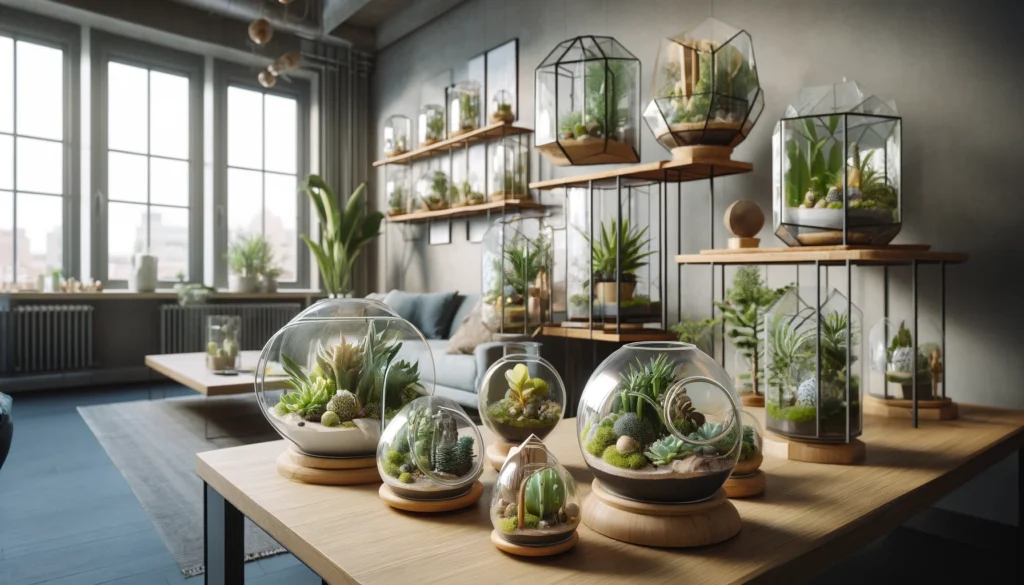
Plant terrariums have become a trendy way to display plants indoors, creating miniature ecosystems that add a touch of nature to any room. These enclosed glass containers offer a unique and visually striking way to showcase plants:
- Creating and Maintaining Plant Terrariums: To create a plant terrarium, start with a clean glass container and add layers of gravel, activated charcoal, and potting soil. Choose plants that thrive in humid environments, such as ferns, mosses, and air plants. Mist the terrarium occasionally to maintain humidity levels, and trim or replant as needed to prevent overcrowding.
- Popular Plants for Terrariums: Miniature ferns, Fittonia, and Baby Tears are popular choices for terrariums due to their compact size and love for humidity. Succulents and cacti can also thrive in open terrariums with well-draining soil.
- DIY Terrarium Ideas: Get creative with your terrarium designs by incorporating decorative elements like driftwood, rocks, or miniature figurines. Experiment with different container shapes and sizes to create personalized terrariums that reflect your style and taste.
Smart Plant Care Devices
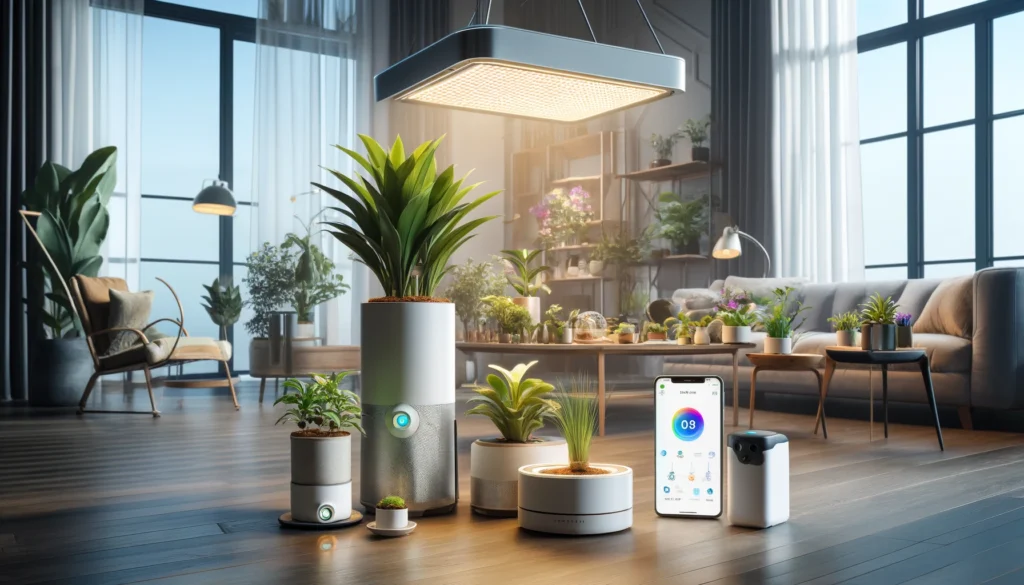
Advancements in technology have led to the development of smart plant care devices that make it easier than ever to monitor and maintain your indoor garden. These innovative gadgets utilize sensors, Wi-Fi connectivity, and smartphone apps to provide real-time data and automate plant care tasks:
- Introduction to Smart Plant Care Technology: Smart plant care devices range from soil moisture sensors and automated watering systems to smart pots and plant monitors. These devices help monitor environmental conditions such as light levels, temperature, and humidity, allowing you to adjust care routines accordingly.
- Best Smart Devices for Plant Care in 2024: Some popular smart plant care devices include the PlantLink Soil Moisture Sensor, the Click & Grow Smart Garden, and the Parrot Flower Power. These devices offer features like customized watering schedules, plant-specific care recommendations, and remote monitoring via smartphone apps.
- How Technology Is Changing Plant Care: Smart plant care devices make plant care more convenient and empower users with valuable insights into their plants’ health and growth. By leveraging technology, even novice gardeners can achieve success with their indoor plants and enjoy the benefits of a thriving green space.
Benefits of Each Home Plant Décor Trend
Vertical Gardens
Vertical gardens are a smart and stylish solution for indoor and outdoor spaces. They offer numerous benefits beyond their aesthetic appeal:
- Space Optimization: Vertical gardens utilize vertical space, perfect for small apartments, urban homes, and offices with limited floor area.
- Improved Air Quality: Plants in vertical gardens can filter pollutants and toxins from the air, improving indoor air quality.
- Thermal Insulation: Vertical gardens can act as natural insulation, helping to regulate indoor temperatures and reduce energy costs.
- Noise Reduction: The dense foliage of vertical gardens can help absorb sound, reducing noise pollution.
- Enhanced Well-being: Greenery has been linked to improved mood, reduced stress, and increased productivity.
Hanging Plants
Hanging plants are not just visually appealing but also practical for various reasons:
- Maximizes Space: Hanging plants free up floor and counter space, making them ideal for small or cluttered areas.
- Improves Air Circulation: Hanging plants allows air to circulate more freely around the foliage, reducing the risk of pests and mold.
- Adds Depth and Interest: Hanging plants create layers in interior design, adding depth and a dynamic look to the space.
- Easy Access to Sunlight: Hanging plants can be positioned to receive optimal sunlight, which is often more difficult with floor plants.
- Safe for Pets and Children: Elevated plants are less likely to be disturbed by pets or young children, keeping the plants and your loved ones safe.
Plant Terrariums
Plant terrariums are miniature ecosystems that bring a touch of nature into any space. Their benefits include:
- Low Maintenance: Terrariums are self-sufficient, requiring less frequent watering and care.
- Educational: Terrariums are excellent educational tools for children because they offer a great way to learn about plant biology, ecosystems, and the water cycle.
- Compact and Portable: Terrariums can be small and easily moved, making them suitable for desks, shelves, and countertops.
- Customizable: Terrariums can be personalized with various plants, decorative stones, and miniature figures, making them unique and creative décor pieces.
- Increases Humidity: Closed terrariums create a humid environment, which benefits plants that thrive in moisture-rich conditions.
Smart Plant Care Devices
Smart plant care devices leverage technology to simplify and enhance plant care, offering numerous advantages:
- Convenience: These devices automate routine tasks like watering and monitoring, saving time and effort.
- Precision: Sensors provide accurate data on soil moisture, light levels, temperature, and humidity, enabling precise care tailored to each plant’s needs.
- Remote Monitoring: Many smart devices allow for remote monitoring and control via smartphone apps, so you can care for your plants even when you’re away.
- Data-Driven Insights: Smart devices collect and analyze data over time, offering insights into plant growth patterns and health.
- Improves Plant Health: With the precise care enabled by smart devices, plants are more likely to thrive, leading to healthier and more vibrant indoor gardens.
Incorporating Plant Trends into Different Home Settings and Lifestyles
Urban Apartments
Urban living often means limited space, but incorporating plants can make a big difference in small apartments:
- Vertical Gardens: Vertical garden systems utilize wall space. Wall-mounted planters or living walls can transform blank walls into lush, green areas without taking up floor space.
- Hanging Plants: Install hanging plants in corners or near windows. Use lightweight pots and sturdy hooks to secure them. Ideal plants include trailing varieties like Devil’s Ivy or String of Pearls.
- Terrariums: Place small terrariums on shelves, coffee tables, or desks. They add a touch of greenery without requiring much space or maintenance.
- Smart Plant Devices: Use smart planters or moisture sensors to ensure your plants receive the right amount of water and light, even in a busy urban lifestyle.
Suburban Homes
Suburban homes typically have more space, allowing for more extensive plant décor:
- Vertical Gardens: Create a statement piece with a vertical garden in the living room or on an outdoor patio wall. This can serve as a natural focal point and conversation starter.
- Hanging Plants: Hanging plants are a great addition to larger rooms like the living room or kitchen. Grouping multiple hanging plants at different heights can create a lush, layered effect.
- Terrariums: Larger terrariums can be used as centerpieces on dining tables or as decorative elements in living areas. Consider incorporating a variety of plants for a diverse look.
- Smart Plant Devices: Utilize smart irrigation systems for both indoor and outdoor plants, ensuring they are well-maintained with minimal effort.
Home Offices
Incorporating plants into a home office can improve productivity and reduce stress:
- Vertical Gardens: A small vertical garden behind your desk can provide a calming backdrop and improve air quality.
- Hanging Plants: Hang plants near windows to maximize natural light and keep your desk clutter-free. Choose low-maintenance plants that thrive in indirect light.
- Terrariums: Place a small terrarium on your desk for a touch of nature. Terrariums with succulents or air plants are ideal as they require minimal care.
- Smart Plant Devices: Use desktop smart planters that monitor soil moisture and light levels, providing notifications to your phone when care is needed.
Families with Children and Pets
When considering plants in homes with children and pets, safety and practicality are key:
- Vertical Gardens: Create vertical gardens on walls to keep plants out of reach. This prevents curious children and pets from accessing them.
- Hanging Plants: Ensure hanging plants are securely fastened and use non-toxic varieties. Hanging plants can add greenery without posing a risk to children or pets.
- Terrariums: Choose closed terrariums to prevent small hands or paws from entering. Place them on higher shelves or in less accessible areas.
- Smart Plant Devices: Smart devices can help maintain plant health without frequent manual intervention, making it easier to manage plants in a busy household.
Eco-Friendly Lifestyles
For those focused on sustainability and eco-friendliness, plants can play a crucial role:
- Vertical Gardens: Vertical gardens can be used to grow herbs and vegetables, promoting sustainable living by providing home-grown produce.
- Hanging Plants: Use hanging plants made from recycled materials or repurpose old containers as plant holders.
- Terrariums: Create terrariums using upcycled glass containers and choose plants that require minimal water, contributing to water conservation.
- Smart Plant Devices: Select energy-efficient smart devices that help conserve water and reduce waste by providing precise care instructions.
Practical Tips for Maintaining Home Plants
Maintaining home plants can be easy and rewarding with the right tips and techniques. Here’s how to ensure your plants stay healthy and vibrant:
Watering
- Know Your Plant’s Needs: Different plants have different water requirements. Research each plant’s needs to avoid overwatering or underwatering.
- Use the Right Technique: Water plants at the base rather than from above to prevent mold and mildew on leaves. Use a watering can with a long spout for better control.
- Check Soil Moisture: Before watering, check the soil moisture level by sticking your finger about an inch into the soil. If it feels dry, it’s time to water.
- Establish a Schedule: Set a regular watering schedule, but be flexible and adjust based on the plant’s needs and environmental conditions.
Light
- Understand Light Levels: Identify the light levels in different areas of your home (full sun, partial shade, etc.) and place plants accordingly.
- Rotate Plants: Rotate your plants every few weeks to ensure even growth and prevent them from leaning towards the light source.
- Supplement with Artificial Light: If natural light is insufficient, use grow lights to provide the necessary light spectrum for plant growth.
Soil and Fertilization
- Choose the Right Soil: Use soil appropriate for the plant type. For example, succulents need well-draining soil, while ferns prefer more moisture-retentive soil.
- Fertilize Appropriately: Feed plants with the right type of fertilizer. Follow the recommended dosage and frequency to avoid over-fertilization, which can damage plants.
- Re-pot When Needed: Re-pot plants when they outgrow their containers or if the soil becomes compacted and loses nutrients.
Pruning and Cleaning
- Regular Pruning: Trim dead or yellowing leaves and spent flowers to promote healthy growth and prevent disease.
- Clean the Leaves: Dust can accumulate on plant leaves, blocking sunlight and reducing photosynthesis. Wipe leaves with a damp cloth regularly.
- Check for Pests: Inspect plants regularly for signs of pests like aphids, spider mites, and mealybugs. Treat infestations promptly with appropriate remedies.
Temperature and Humidity
- Maintain Stable Temperatures: Most indoor plants prefer temperatures between 60-75°F (15 – 24°C). Avoid placing plants near drafts, heating vents, or cold windows.
- Control Humidity: Some plants, like tropical varieties, thrive in higher humidity. Use a humidifier or place a water tray near the plants to increase humidity.
- Grouping Plants: Grouping plants together can create a microenvironment with higher humidity, benefiting humidity-loving plants.
Smart Plant Devices
- Use Technology: Smart plant care devices can monitor soil moisture, light levels, and other conditions, providing notifications and care tips through smartphone apps.
- Automate Watering: Consider using automated watering systems for consistent and precise watering, especially when you’re away.
By following these practical tips, you can create a thriving indoor garden that enhances your home’s beauty and brings the benefits of nature indoors.
Choosing the Right Plants for Your Home
Selecting the right plants for your home ensures they thrive in their environment. Consider the following factors when choosing plants:
1. Light Conditions
Different plants have varying light requirements. Assess the light levels in your home and choose plants that match those conditions:
- Low Light: Choose plants like snakes, pothos, or peace lilies that thrive in low-light conditions.
- Medium Light: Plants such as philodendrons, spider plants, or dracaenas are suitable for areas with moderate light.
- Bright Indirect Light: Plants like ferns, orchids, or African violets prefer bright, indirect light.
- Full Sun: If you have sunny spots, consider plants like succulents, cacti, or herbs that thrive in direct sunlight.
2. Space Availability
Consider the space available in your home when choosing plants:
- Small Spaces: For apartments or small rooms, look for compact plants or varieties that can be displayed vertically or hung from ceilings.
- Large Spaces: You can incorporate bigger plants or create statement pieces with tall trees or large foliage plants in larger areas.
3. Maintenance Requirements
Assess your ability to care for plants and choose ones that match your lifestyle:
- Low Maintenance: If you have a busy schedule or are new to plant care, select low-maintenance plants that require minimal attention.
- High Maintenance: For enthusiasts willing to invest time and effort, consider plants with more specific care requirements or those that need regular pruning and grooming.
4. Pet and Child Safety
If you have pets or children, ensure the plants you choose are non-toxic and safe for them:
- Pet-Friendly: Choose non-toxic plants for cats and dogs, such as spider plants, Boston ferns, or air plants.
- Child-Friendly: Avoid plants with thorns or spines and choose varieties that are safe for curious children to be around.
5. Purpose and Aesthetic
Consider the aesthetic you want to achieve and the purpose of the plants in your home:
- Decorative: Choose plants that complement your interior décor style and enhance the visual appeal of your space.
- Functional: Incorporate herbs, edible plants, or air-purifying varieties to serve practical purposes while adding greenery to your home.
6. Climate Considerations
Take into account the climate of your region and select plants that are suitable for indoor conditions:
- Native Plants: Consider incorporating native plants well-adapted to your local climate and indoor environments.
- Climate Compatibility: Choose plants that can thrive in your home’s temperature and humidity levels without requiring extensive adjustments.
By considering these factors, you can make informed decisions when choosing plants that flourish in your home environment, enhancing aesthetics and well-being.
7. Purpose and Aesthetic
When choosing plants for your home, it’s essential to consider both their decorative value and functionality. Plants can enhance the visual appeal of your space and serve practical purposes, contributing to a more pleasant and healthy living environment.
Decorative Plants
Decorative plants are chosen primarily for their beauty and ability to complement your interior décor. Here are some tips and plant recommendations:
- Matching Décor Styles: Select plants that complement your interior design. Consider sleek, minimalist plants like a snake or ZZ plants for a modern look. For a more bohemian style, trailing plants like pothos or philodendrons add a lush, wild touch.
- Color Coordination: Use plants to enhance the color scheme of your room. For example, the deep green of a monstera or the vibrant flowers of an orchid can accentuate specific colors in your décor.
- Statement Pieces: Larger plants, such as fiddle-leaf figs or birds of paradise, can serve as focal points in a room, drawing attention and creating a dramatic effect.
- Textural Contrast: Mix plants with different leaf shapes and textures to add visual interest. Pairing the broad leaves of a calathea with the delicate fern fronds can create a dynamic display.
Functional Plants
Functional plants serve practical purposes in addition to their aesthetic appeal. They can improve air quality, provide fresh herbs for cooking, or add a sense of calm and well-being. Here are some suggestions:
- Air-Purifying Plants: Certain plants are known for filtering toxins from the air. Examples include peace lilies, spider plants, and English ivy. These plants can help create a healthier indoor environment.
- Edible Plants: Incorporate herbs and small vegetables into your living space. Herbs like basil, mint, and rosemary provide fresh cooking flavors and add a delightful fragrance and green touch to your home.
- Stress-Reducing Plants: Plants like lavender, jasmine, and aloe vera have properties that can promote relaxation and reduce stress. Place them in areas where you unwind, such as bedrooms or living rooms.
- Humidifying Plants: Some plants naturally increase humidity levels in your home, which can be beneficial in dry climates. Ferns, peace lilies, and palms are great options for this purpose.
You can create a harmonious and inviting living space by thoughtfully selecting plants that align with your aesthetic preferences and functional needs. Whether you aim to purify the air, grow your herbs, or add a touch of nature to your décor, there are plants to suit every purpose and style.


